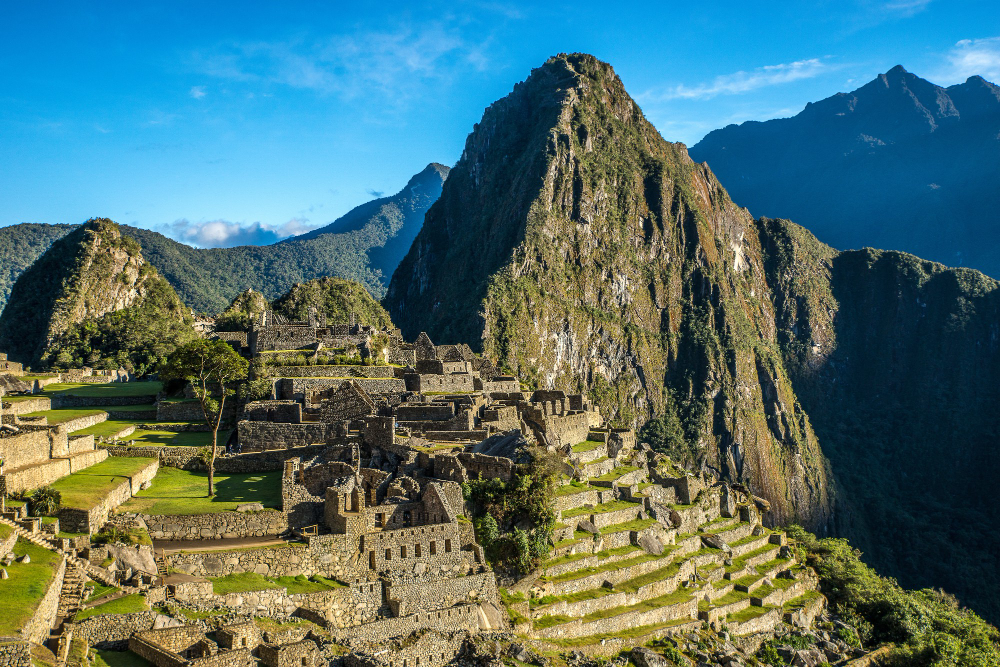The world is filled with awe-inspiring sites that tell stories of human ingenuity, culture, and history. Among these treasures, the New 7 Wonders of the World stand as a testament to our shared heritage. These remarkable landmarks capture the essence of what it means to be part of a global community. Each one offers a unique glimpse into different times and places.
From ancient civilizations to modern marvels, these wonders invite exploration and inspire wonder in every traveler who encounters them. Whether you dream of hiking through lush mountains or wandering through grand architectural feats, each site has its own tale waiting to be uncovered. Join us on this journey as we delve into the mysteries behind these iconic locations!
The Original Seven Wonders of the Ancient World
The Original Seven Wonders of the Ancient World were extraordinary feats that captivated imaginations for centuries. They spark a sense of wonder about what humanity can create.
Among them was the Great Pyramid of Giza, the only surviving wonder today. This monumental tomb showcased incredible architectural skills that still baffle experts.
Then there was the Hanging Gardens of Babylon, often described as a lush paradise with cascading greenery—a testament to ancient engineering and horticulture.
Next came the Statue of Zeus at Olympia, which celebrated heritage through art and religious devotion. Crafted by Phidias, it stood as an impressive symbol during its time.
Other wonders included the Temple of Artemis in Ephesus, known for its stunning beauty; the Mausoleum at Halicarnassus, a remarkable tomb filled with intricate sculptures; and lastly, The Colossus of Rhodes—a giant statue representing triumph over adversity. Each one played a part in shaping our historical narrative.
The History and Selection Process of the New 7 Wonders
The New 7 Wonders of the World emerged from a global initiative launched in 2000 by Swiss foundation New7Wonders. The aim was clear: to celebrate human creativity and heritage.
Public voting played a pivotal role. Millions participated, casting their votes through various platforms, showcasing their preferences for historical sites that inspired awe across continents.
In 2007, after intense deliberation, the final list was revealed. This selection highlighted architectural marvels that not only showcased human ingenuity but also reflected diverse cultures and histories.
Each site tells its own unique story, rooted deeply in the tapestry of humanity’s past. The process brought together voices from every corner of the globe, emphasizing our collective appreciation for remarkable achievements throughout history.
Machu Picchu in Peru
Machu Picchu, perched high in the Andes Mountains of Peru, is a breathtaking sight. This ancient Incan citadel captivates travelers with its stunning architecture and rich history.
Constructed in the 15th century, it was once a royal estate or religious retreat. The precision of its stonework speaks to the incredible skill of the Incas. Each structure blends seamlessly into the mountainous landscape.
Visitors often hike the Inca Trail for days to reach this iconic site. As they ascend, they are rewarded with panoramic views that leave them speechless.
Surrounded by lush greenery and steep cliffs, Machu Picchu feels both serene and mystical. The early morning fog adds an ethereal touch as it blankets the ruins.
Exploring its terraces, temples, and plazas offers a glimpse into a civilization long past but never forgotten. Every corner tells stories carved in time on stones that have weathered centuries.
Chichen Itza in Yucatan, Mexico
Chichen Itza is a mesmerizing archaeological site that showcases the brilliance of the ancient Maya civilization. Nestled in the Yucatán Peninsula, it draws travelers from around the globe.
The most iconic structure here is El Castillo, also known as the Temple of Kukulcán. This pyramid stands tall at 24 meters and features 365 steps—one for each day of the year. During equinoxes, shadows create a serpent-like illusion slithering down its stairs.
Walking through Chichen Itza feels like stepping back in time. The Great Ball Court echoes with stories of ritual games played centuries ago. The acoustics are remarkable; whispers can travel across vast distances.
Visitors marvel at sacred cenotes nearby, which were crucial for water supply and religious practices. Each corner reveals intricate carvings and remnants that echo history’s tales, making it a captivating destination for curious minds seeking to unlock ancient secrets.
Christ the Redeemer in Rio, Brazil
Perched atop the Corcovado Mountain, Christ the Redeemer stands as a symbol of faith and hope. This towering statue reaches 98 feet high, with an arm span of 92 feet.
Completed in 1931, it took nearly nine years to build. The vision was shared by architect Heitor da Silva Costa and sculptor Paul Landowski. Together, they created this masterpiece from reinforced concrete and soapstone.
Visitors flock to this iconic site for breathtaking views of Rio de Janeiro below. The statue overlooks famous beaches like Copacabana and Ipanema while embracing the vibrant cityscape.
At twilight, when illuminated against the night sky, Christ appears even more majestic. His open arms invite all who come near—a gesture that transcends cultural boundaries.
Whether viewed from afar or up close, Christ the Redeemer inspires awe in those fortunate enough to witness its grandeur firsthand.
Petra in Jordania
Petra, carved into rose-red cliffs of Jordan, is a masterpiece that evokes wonder. This ancient city was once a thriving trade hub in the Nabataean kingdom.
Visitors are greeted by the iconic Al-Khazneh, or the Treasury, its stunning facade captivating all who enter. The intricate carvings tell tales of wealth and artistry from centuries past.
Wandering through Petra’s narrow canyon, known as Siq, feels like stepping back in time. Sunlight dances on stone walls that whisper secrets of traders and travelers.
Beyond the Treasury lies an entire world waiting to be explored—tombs, temples, and amphitheaters dotting this desert landscape. Each step reveals layers of history etched into every rock.
The unique blend of natural beauty and human ingenuity makes Petra a true marvel. It continues to draw adventurers seeking both adventure and enlightenment amidst its ancient ruins.
Colosseum in Rome, Italy
The Colosseum, an iconic symbol of Rome, stands as a testament to ancient engineering and architecture. This massive amphitheater once hosted gladiatorial contests, animal hunts, and dramatic performances that captivated thousands.
Built between AD 70-80 under Emperor Vespasian, the structure showcases intricate arches and vaults. Its elliptical shape allowed for optimal viewing experiences. Spectators filled the seats in anticipation of thrilling spectacles beneath the sun.
Walking through its grand corridors evokes a sense of history. You can almost hear the roar of crowds echoing through time. The ruins tell stories of glory and despair alike.
Today, it remains one of Italy’s most visited sites. As you stroll around this magnificent structure, you can’t help but feel connected to those who walked before you—experiencing both triumphs and tragedies within these very walls.
Taj Mahal in India
The Taj Mahal stands as a timeless symbol of love and artistry. Nestled in Agra, India, this magnificent mausoleum was commissioned by Emperor Shah Jahan in memory of his beloved wife, Mumtaz Mahal.
Its stunning white marble façade changes hue throughout the day. In the morning light, it glistens like pure silk; at sunset, it reflects shades of pink and gold. Visitors are often left speechless by its beauty.
Intricate carvings adorn every corner. The detailed floral patterns showcase the skill of Mughal artisanship from centuries past. Each detail tells a story woven through time.
Beyond its architectural brilliance lies an air of romance and tragedy that permeates the site. Walking through its lush gardens invites reflection on love lost and enduring legacy.
Millions flock to witness this wonder each year, drawn not just by its looks but also by the profound emotions it evokes within them.
Great Wall of China
The Great Wall of China stands as a timeless testament to human ingenuity and perseverance. Stretching over 13,000 miles, this architectural marvel was built to protect against invasions and raids from nomadic tribes. Construction began as early as the 7th century BC, with various dynasties contributing to its expansion and fortification.
Walking along the wall offers breathtaking views of China’s rugged landscape. Visitors can explore different sections, each offering unique experiences, from well-preserved areas bustling with tourists to remote stretches where nature reigns supreme. The wall is not just about bricks and mortar; it carries stories of sacrifices made by countless workers who labored under harsh conditions.
Today, the Great Wall draws millions of visitors annually. Its status as one of the New 7 Wonders continues to inspire awe in those who walk its paths or admire it from afar. It reminds us that while civilizations rise and fall, certain achievements endure through time—a true wonder worthy of exploration and admiration for generations to come.
Credit photo : https://www.freepik.com/free-photo/aerial-shot-beautiful-village-by-mountain-captured-machu-picchu-peru_10292210.htm#fromView=search&page=1&position=48&uuid=9385c93e-4fe0-4d57-a7d0-98bde1585fb3




